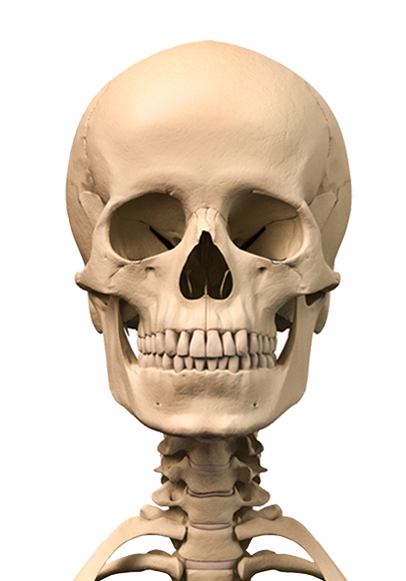Temporal Bone
Human head contains a single large bony structure called the skull, which is further made up of a large number of small bones. Among these bones, the bone that is present on the base of the skull (base is also made by some other bones) and on sides of the skull is called the temporal bone. It is called the temporal bone because it is related to the temporal region (region on both sides of the head behind the eyes). This bone protects the base, temple region of the brain and the middle and internal ear of human beings.
The joints between different bones of skull (flat bones at the top) are represented by sutures. Different sutures are present between the temporal and other bones of the skull where they meet each other. At the inferior side, the temporal bone forms joint with the mandible bone and this joint is called temporomandibular joint.
read moreTemporal Bone
GENERAL ANATOMICAL FEATURES
For the sake of study, the bone can be divided into following 5 parts:
The squamous part is thin and smooth part of the temporal bone.
-
Its inner surface is concave. It has depressions due to the convulsions of the temporal lobe of the brain. It has grooves for the branches of middle meningeal vessels.
-
Its outer surface is smooth and convex. It forms the part of temporal fossa (depression) and it also gives surface for the attachment of the temporalis muscle.
-
The zygomatic process is an extension of the squamous part of temporal bone anteriorly. It contributes in the formation of zygomatic arch.
-
The mandibular fossa is present below the zygomatic process. It is a depression (that is why called fossa) present in the lower part of the squamous part of temporal bone
-
The articular tubercle which is a bony prominence is present on the zygomatic arch.
The tympanic part is the region present between the squamous and mastoid part of the temporal bone. The ear canal is present in this part.
-
The external auditory meatus is surrounded by the tympanic part of temporal bone.
The mastoid part is rough and heavier region that is located behind ear on each side of the head.
-
The mastoid process is the conical prominence of mastoid process of temporal bone. It is present behind the external auditory meatus.
-
The mastoid notch is a depression that is present on medial side of the mastoid process.
-
The mastoid foramen is a small opening that is present posterior to the mastoid process.
The petrous part of temporal bone is also called petrosal ridge. It is the hardest part of temporal bone. It is present at the base of skull and is located between sphenoid and occipital bones. It contains the middle ear and inner ear structures in it and thus protects them in addition to the brain.
-
The internal auditory meatus (opening of inner ear) is present in this part of the temporal bone.
-
The jugular foramen is a small opening that is present between the occipital bone and the petrous part of temporal bone. This opening transmits the glossopharyngeal, vagus and accessory nerves and the jugular vein also.
-
The foramen lacerum is also an opening which is present at the junction of three bones i.e. sphenoid, occipital and petrous part of temporal bone. It does not transmit any structure; rather it is filled with cartilage in adults.
The styloid process of temporal bone is a pointed, narrow projection that is formed from the point (behind external ear), which is junction of tympanic and petrous parts of the temporal bone. It gives attachments to different muscles and ligaments that are related to the tongue, pharynx and hyoid bone.
SOME CLINICAL ASPECTS
Pterion is a point where temporal, frontal, parietal and sphenoid bones meet. It is the weakest point of the skull hence it is liable to fracture. On fracture, the middle meningeal artery that travels below the pterion is ruptured. This results in collection of blood inside the skull thus creating increased intracranial pressure and is dangerous.
The mastoid process can be infected by middle ear infections. This infection can spread to the middle cranial fossa and further to brain, causing meningitis (inflammation of covering of the brain).
Normally the temporal bone is not fractured as it is very strong bone (the only thin squamous part of bone is covered by temporalis muscle thus making it also thick). It can only be fractured as a result of severe blunt trauma direct to the skull.
Report Error



